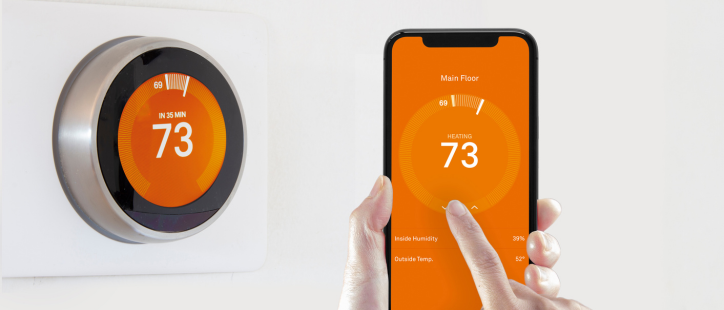In our busy lives, indoor comfort is something we often take for granted. Whether it’s staying warm during the winter months or keeping cool in the scorching summer heat, our HVAC (Heating, Ventilation, and Air Conditioning) systems play a crucial role in maintaining our comfort. But what exactly is an HVAC system, and how does it work? In this helpful article, we’ll explore the fundamentals of HVAC systems, their components, and how they function to provide us with a comfortable indoor environment.
Understanding HVAC Systems
HVAC stands for Heating, Ventilation, and Air Conditioning. It’s a broad term that encompasses the systems and technologies used to regulate the temperature, humidity, and air quality in indoor spaces. HVAC systems are essential in residential, commercial, and industrial settings, as they create a comfortable and healthy environment for occupants.
The Components of an HVAC System
An HVAC system consists of several key components, each with a specific role in maintaining indoor comfort. Here’s a brief overview of these components:
Heating System: The heating component of an HVAC system is responsible for raising the indoor temperature during cold weather. Common heating systems include furnaces, heat pumps, and boilers.
Cooling System: The cooling component, often referred to as air conditioning, is responsible for lowering the indoor temperature during hot weather. Cooling systems include central air conditioners and heat pumps.
Air Handler: The air handler is a central unit that circulates conditioned air throughout the building. It contains a blower, filters, and sometimes a heating or cooling coil.
Thermostat: The thermostat serves as the control center for the HVAC system. It allows users to set their preferred temperature and mode (heating, cooling, or fan-only) and communicates with the heating and cooling equipment to maintain the desired temperature.
Ductwork: Ductwork is a network of channels or pipes that distribute conditioned air throughout the building. It includes supply ducts that deliver treated air and return ducts that carry air back to the HVAC system for reconditioning.
Ventilation System: Ventilation is crucial for maintaining indoor air quality. Ventilation systems introduce fresh outdoor air into the building and expel stale indoor air, ensuring proper oxygen levels and removing pollutants.
How an HVAC System Works
Understanding how an HVAC system works requires a closer look at its operation during both heating and cooling modes.
Heating Mode:
- When you set the thermostat to a higher temperature than the current indoor temperature, the heating system is activated. In a forced-air system, the furnace or heat pump’s burner or electric heating element produces heat.
- The blower in the air handler circulates air across the heat source, where it’s heated. The warm air is then distributed through the ductwork to various rooms.
- Return ducts carry cooler indoor air back to the air handler, where it’s reheated and recirculated. This cycle continues until the desired temperature is reached.
Cooling Mode:
- In cooling mode, when you set the thermostat to a lower temperature than the current indoor temperature, the air conditioning system is activated.
- The air conditioner or heat pump’s compressor pressurizes a refrigerant, which circulates through coils in the indoor and outdoor units. In the indoor coil, the refrigerant evaporates, absorbing heat from the indoor air.
- The blower in the air handler circulates warm indoor air across the cold evaporator coil, cooling it before distributing it through the ductwork to various rooms.
- Meanwhile, the outdoor unit releases heat as the refrigerant condenses back into a liquid and is ready to repeat the cycle.
Ventilation and Air Quality
Proper ventilation is essential for maintaining indoor air quality. HVAC systems can include various ventilation methods, such as natural ventilation through windows, mechanical ventilation systems with fans, or energy recovery ventilators (ERVs) that exchange heat and humidity between incoming and outgoing air.
Additionally, HVAC systems often include filters to remove airborne particles like dust, pollen, and allergens. Some advanced systems even include air purifiers or UV-C germicidal lights to further improve indoor air quality.
Energy Efficiency and Sustainability
Modern HVAC systems are designed to be energy-efficient and environmentally friendly. They incorporate technologies like variable-speed fans, programmable thermostats, and zoning systems to optimize energy usage and reduce operating costs.
Many HVAC systems use environmentally responsible refrigerants with lower global warming potential (GWP) to minimize their impact on the environment. Additionally, energy-efficient HVAC systems contribute to sustainability by reducing energy consumption and greenhouse gas emissions.
Maintenance and Care
To ensure the smooth operation and longevity of your HVAC system, regular maintenance is essential. Here are some maintenance tasks to consider:
**1. Change Filters: Replace air filters regularly to maintain proper airflow and indoor air quality. The frequency depends on the type of filter and usage but typically ranges from every one to three months.
**2. Clean Ducts and Vents: Periodically inspect and clean ductwork and vents to remove dust and debris that can obstruct airflow.
**3. Schedule Professional Inspections: Arrange for annual or biannual professional HVAC inspections and maintenance to check for issues, optimize performance, and extend the system’s lifespan.
**4. Program Thermostat: Use a programmable thermostat to create temperature schedules that match your daily routines, reducing energy consumption when heating or cooling is not necessary.
An HVAC system is a complex network of components that work together to create a comfortable indoor environment. Whether it’s heating, cooling, ventilating, or improving indoor air quality, these systems play a vital role in our daily lives. Understanding how HVAC systems function can help homeowners like you make informed decisions about maintenance, upgrades, and energy efficiency, ensuring years of reliable performance and indoor comfort.



